Mercedes A-Class VS VW ID.4 – Specs, Efficiency & Price Comparison
Which model is the better choice – the Mercedes A-Class or the VW ID.4? We compare performance (320 HP vs 340 HP), boot capacity (350 L vs 543 L), efficiency (0.70 L vs 15.80 kWh), and of course, the price (32300 £ vs 34600 £).
Find out now which car fits your needs better!
The Mercedes A-Class (Hatchback) is powered by a Plugin Hybrid, Petrol MHEV or Diesel engine and comes with a Automatic transmission. In comparison, the VW ID.4 (SUV) features a Electric engine and a Automatic gearbox.
When it comes to boot capacity, the Mercedes A-Class offers 350 L, while the VW ID.4 provides 543 L – depending on what matters most to you. If you’re looking for more power, you’ll need to decide whether the 320 HP of the Mercedes A-Class or the 340 HP of the VW ID.4 suits your needs better.
There are also differences in efficiency: 0.70 L vs 15.80 kWh. In terms of price, the Mercedes A-Class starts at 32300 £, while the VW ID.4 is available from 34600 £.
Compare all the key specs now and find out which model fits your lifestyle best!
In the battle between the Mercedes A-Class and the VW ID.4, discerning drivers find themselves choosing between refined luxury and modern electrification. The Mercedes A-Class impresses with its high-quality interior and advanced infotainment system, catering to those who savor opulence in a compact form. In contrast, the VW ID.4 stands out with its spacious, eco-friendly approach and innovative electric drivetrain, making it a forward-thinking choice for the environmentally conscious driver.
Mercedes A-Class
The Mercedes-Benz A-Class is a perfect blend of luxury and practicality, offering a refined interior that boasts high-quality materials and meticulous attention to detail. It's designed with a sleek and modern aesthetic that appeals to those who appreciate both style and performance. The driving experience is enhanced by cutting-edge technology and a range of features that provide both comfort and safety on every journey.
details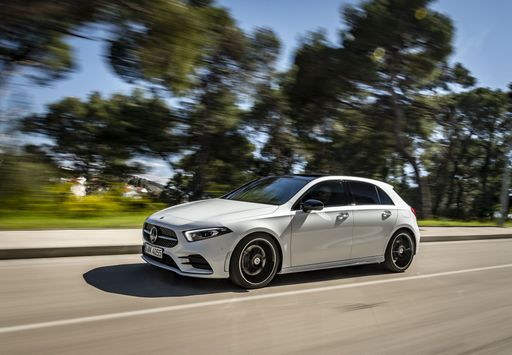 @ group-media.mercedes-benz.com
@ group-media.mercedes-benz.com
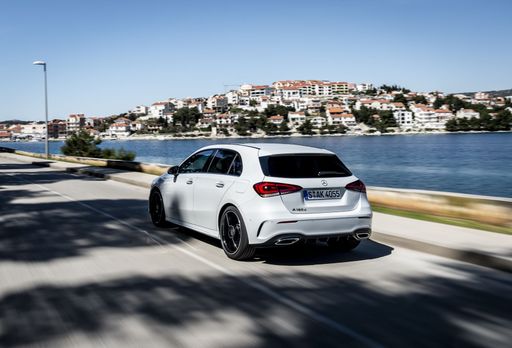 @ group-media.mercedes-benz.com
@ group-media.mercedes-benz.com
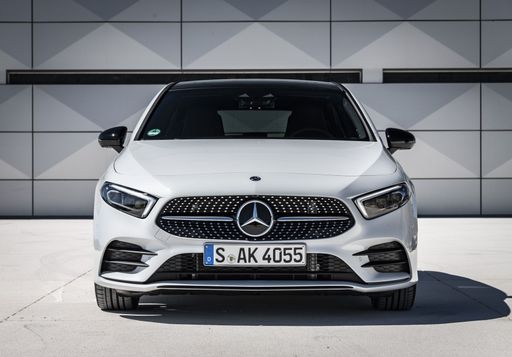 @ group-media.mercedes-benz.com
@ group-media.mercedes-benz.com
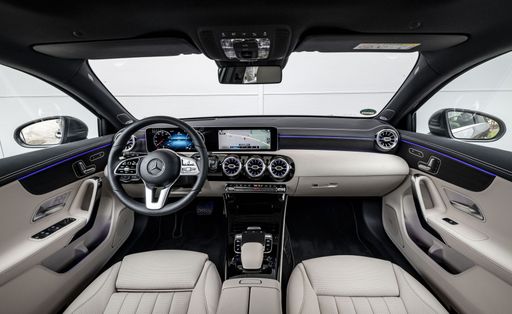 @ group-media.mercedes-benz.com
@ group-media.mercedes-benz.com
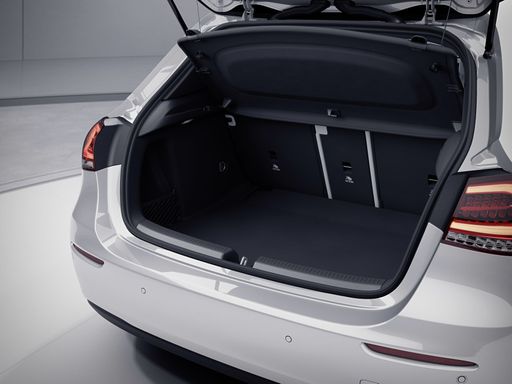 @ group-media.mercedes-benz.com
@ group-media.mercedes-benz.com
VW ID.4
The VW ID.4 represents Volkswagen's commitment to the electric vehicle market, combining contemporary design with sustainability. Its spacious interior and intuitive technology make it an attractive choice for those seeking comfort and innovation in an eco-friendly package. With a focus on electric performance and practicality, this car is set to be a popular option among environmentally-conscious drivers.
details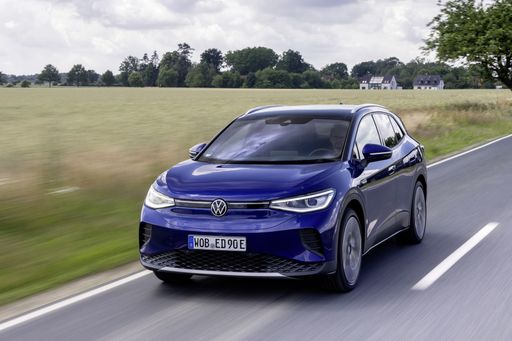 @ Volkswagen
@ Volkswagen
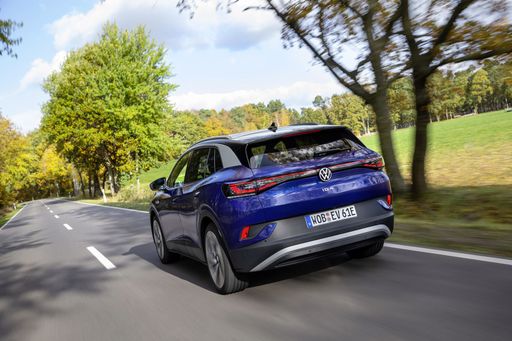 @ Volkswagen
@ Volkswagen
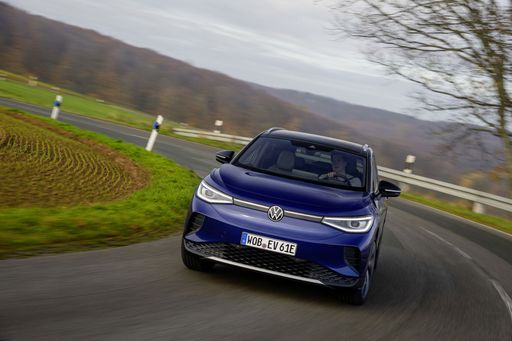 @ Volkswagen
@ Volkswagen
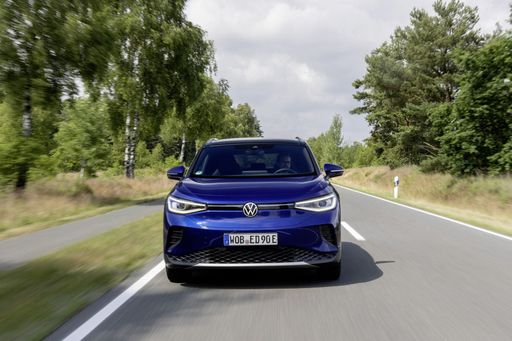 @ Volkswagen
@ Volkswagen
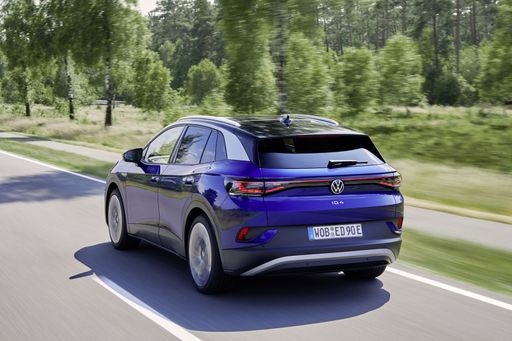 @ Volkswagen
@ Volkswagen
 @ Volkswagen
@ Volkswagen
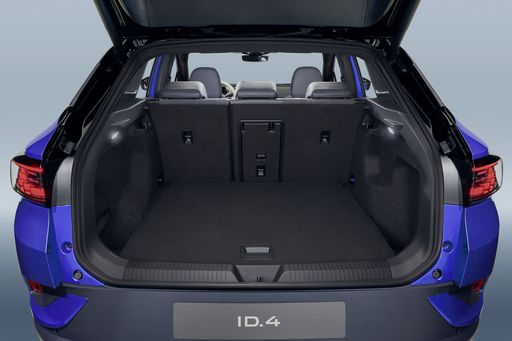 @ Volkswagen
@ Volkswagen
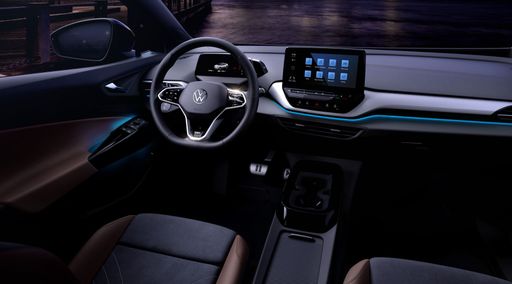 @ Volkswagen
@ Volkswagen
Urban Sophistication vs. Electrical Surge: Mercedes A-Klasse and VW ID.4
In the ever-evolving landscape of the automotive industry, two distinct segments continue to captivate the interest of car enthusiasts: the traditional hatchback and the electric SUV. In this comparison, we pit the refined Mercedes A-Klasse against the innovative VW ID.4, examining their respective strengths and cutting-edge technologies. Whether you're an urban dweller seeking sophistication or an eco-conscious trailblazer, the choice between these two exceptional vehicles could redefine your driving experience.
Performance and Powertrains
The Mercedes A-Klasse, a staple in the hatchback category, offers various engine types, including petrol MHEV, diesel, and plug-in hybrid, all mated to a dual-clutch automatic transmission. Power output ranges from 116 HP to a staggering 421 HP, a testament to its versatile engineering. Depending on the engine, the A-Klasse sprints from 0 to 100 km/h in as little as 3.9 seconds, showcasing its sporty pedigree. The FWD or AWD configurations further enhance the car's adaptability to different driving conditions.
On the other hand, the VW ID.4 stakes its claim in the electric frontier. With all models featuring a reduction gearbox automatic transmission, the ID.4 offers rear-wheel or all-wheel drive configurations. Its all-electric powertrain boasts an impressive 340 HP at its peak, propelling the SUV from 0 to 100 km/h in just 5.4 seconds. The ID.4's electric range of up to 572 km per charge makes it a formidable contender for long-distance journeys.
Efficiency and Sustainability
Efficiency is a hallmark of both vehicles, albeit in different arenas. The Mercedes A-Klasse presents a varying fuel consumption range, with the plug-in hybrid delivering remarkable energy efficiency with just 0.7 L/100 km and an electric range of 86 km courtesy of its 12.9 kWh battery. CO2 emissions vary across models but are minimized with the plug-in hybrid option.
The VW ID.4 stands out with zero tailpipe emissions, adhering to an "A" efficiency class due to its purely electric nature. It consumes between 15.8 to 16.8 kWh/100 km, affirming Volkswagen's commitment to a sustainable motoring future.
Interior and Styling
Stepping inside the Mercedes A-Klasse, occupants are greeted by a blend of luxury and cutting-edge technology. The interior space accommodates five passengers, with a premium finish that is synonymous with the Mercedes-Benz brand. Despite its compact size, the trunk capacity of up to 350 liters is practical for city use, augmented by the A-Klasse's overall length of around 4440 mm.
The VW ID.4, being an SUV, naturally offers a more generous interior space, with a maximum trunk capacity of 543 liters. Its slightly larger dimensions with a length of approximately 4584 mm provide a more commanding presence on the road. The cabin design emphasizes functionality and modernity, aligning with its electric credentials.
Innovation and Technology
Innovation permeates every aspect of these vehicles. The Mercedes A-Klasse is equipped with an array of advanced driver-assist features and connectivity options, ensuring safety and convenience are never compromised. The MBUX infotainment system, complete with voice recognition, is a particular highlight, making it an interactive companion for drivers.
In contrast, the VW ID.4 focuses heavily on introducing drivers to the electric ecosystem. It features an intuitive digital cockpit, seamless integration with smart home devices, and adaptive cruise control. VW's emphasis on software updates and connectivity highlights the ID.4's role as both a vehicle and a digital hub on wheels.
Final Verdict
Choosing between the Mercedes A-Klasse and the VW ID.4 involves considering personal lifestyle and driving priorities. The A-Klasse appeals to those who desire a blend of traditional sophistication with modern efficiency, while the ID.4 beckons those ready to embrace the future of sustainable mobility. Each vehicle stands as a testament to their brand's engineering excellence, promising an impactful presence on the road—whether driven by combustion or electrons.

|

|
|
|
|
Costs and Consumption |
|
|---|---|
|
Price
32300 - 55600 £
|
Price
34600 - 46700 £
|
|
Consumption L/100km
0.7 - 8.3 L
|
Consumption L/100km
-
|
|
Consumption kWh/100km
-
|
Consumption kWh/100km
15.8 - 16.8 kWh
|
|
Electric Range
86 km
|
Electric Range
357 - 572 km
|
|
Battery Capacity
12.90 kWh
|
Battery Capacity
52 - 77 kWh
|
|
co2
17 - 188 g/km
|
co2
0 g/km
|
|
Fuel tank capacity
35 - 51 L
|
Fuel tank capacity
-
|
Dimensions and Body |
|
|---|---|
|
Body Type
Hatchback
|
Body Type
SUV
|
|
Seats
5
|
Seats
5
|
|
Doors
5
|
Doors
5
|
|
Curb weight
1440 - 1695 kg
|
Curb weight
1979 - 2261 kg
|
|
Trunk capacity
310 - 350 L
|
Trunk capacity
543 L
|
|
Length
4428 - 4447 mm
|
Length
4582 - 4584 mm
|
|
Width
1796 mm
|
Width
1852 mm
|
|
Height
1407 - 1423 mm
|
Height
1619 - 1634 mm
|
|
Payload
475 - 485 kg
|
Payload
509 - 541 kg
|
Engine and Performance |
|
|---|---|
|
Engine Type
Plugin Hybrid, Petrol MHEV, Diesel
|
Engine Type
Electric
|
|
Transmission
Automatic
|
Transmission
Automatic
|
|
Transmission Detail
Automat. Schaltgetriebe (Doppelkupplung)
|
Transmission Detail
-
|
|
Drive Type
Front-Wheel Drive, All-Wheel Drive
|
Drive Type
Rear-Wheel Drive, All-Wheel Drive
|
|
Power HP
116 - 320 HP
|
Power HP
170 - 340 HP
|
|
Acceleration 0-100km/h
4.7 - 9.7 s
|
Acceleration 0-100km/h
5.4 - 9 s
|
|
Max Speed
202 - 250 km/h
|
Max Speed
160 - 180 km/h
|
|
Torque
200 - 450 Nm
|
Torque
310 - 679 Nm
|
|
Number of Cylinders
4
|
Number of Cylinders
-
|
|
Power kW
85 - 235 kW
|
Power kW
125 - 250 kW
|
|
Engine capacity
1332 - 1991 cm3
|
Engine capacity
-
|
General |
|
|---|---|
|
Model Year
2024 - 2025
|
Model Year
2023 - 2024
|
|
CO2 Efficiency Class
B, D, E, G
|
CO2 Efficiency Class
A
|
|
Brand
Mercedes-Benz
|
Brand
VW
|
Mercedes A-Class
The Evolution of the Mercedes-Benz A-Class: An Icon of Innovation
The Mercedes-Benz A-Class has long been a symbol of compact luxury and cutting-edge technology, and its latest iterations continue to impress. This model provides more than a sleek design and luxurious interiors; it fuses technology with performance, setting new benchmarks in its segment.
Design and Engineered Elegance
The Mercedes-Benz A-Class is renowned for its stylish and dynamic design, combining elegant aesthetics with an outstanding aerodynamic profile. This balance of form and function is supported by a range of engine options, all of which showcase meticulous engineering. The models boast various power outputs, from 116 PS to 421 PS, offering flexibility for all types of drivers.
Powertrain Options: From Efficient to Exhilarating
The A-Class offers an array of powertrain options, catering to different driving preferences. Featuring petrol mild-hybrids, diesel engines, and even a plug-in hybrid, there are options for those focused both on performance and efficiency. The plug-in hybrid model, for example, presents a remarkable electrical range of up to 86 km, delivering a consumption rate of just 0.7 L/100km, making it ideal for urban commuting.
Advanced Technology at Your Fingertips
Technological innovation is at the heart of the A-Class experience. The latest models are equipped with the MBUX (Mercedes-Benz User Experience) infotainment system, which includes a voice-activated control system and a high-resolution display. Advanced driver assistance systems ensure enhanced safety, providing features like adaptive cruise control and active lane-keeping assistance.
Dynamic Performance and Refined Handling
The A-Class not only promises comfort but also a dynamic driving experience. Models equipped with the AMG Line offer enhanced performance with up to 421 PS, accelerating from 0-100 km/h in as fast as 3.9 seconds. The innovative suspension system and an excellent weight distribution ensure both agility and a comfortable ride.
Sustainability Meets Luxury
In today's eco-conscious world, the A-Class sets a benchmark for environmental sustainability without compromising on luxury. With a range of CO2 efficiency classes from B to G, and impressive fuel economy figures, the A-Class proves that luxury and sustainability can go hand in hand.
Conclusion: The Mercedes-Benz A-Class Legacy Continues
With its blend of stylish design, advanced technology, and powerful performance, the Mercedes-Benz A-Class continues to be a leader in the premium compact segment. Whether you prioritise efficiency, power, or modern connectivity, the A-Class promises a driving experience that is both exhilarating and elegant.
VW ID.4
The VW ID.4: A Leap into the Electric Era
As electric vehicles steadily capture the automotive market, the Volkswagen ID.4 stands as a testament to impressive innovation and functionality. Combining eco-friendly technology with the practicality of an SUV, the VW ID.4 is designed to appeal to both environmentally conscious drivers and those seeking versatility in their vehicle choice. In this article, we'll explore the significant technical features and innovations that make the ID.4 a remarkable option in the electric vehicle market.
Powertrain Options: Efficiency Meets Performance
The Volkswagen ID.4 offers a range of powertrain options to suit various driving preferences. With power outputs ranging from 170 to 340 PS and torque figures between 310 and 679 Nm, the ID.4 provides a versatile driving experience. Whether you opt for the responsive rear-wheel drive or the enhanced stability of the all-wheel-drive configuration, each model guarantees smooth and efficient performance.
With an emphasis on efficiency, the ID.4 boasts a consumption rate between 15.8 and 16.8 kWh/100km, making it an economical choice for those mindful of their energy usage. Furthermore, the ID.4 offers a robust driving range, with potential distances reaching up to 572 km, reducing the need for frequent recharging and allowing for longer journeys with peace of mind.
Charging and Battery Technology
Efficiency isn't the only strong suit of the ID.4—the battery technology is equally impressive. With a battery capacity ranging from 52 to 77 kWh, Volkswagen ensures that drivers can match their vehicle choice to their lifestyle needs. Charging is straightforward and adaptable, providing convenience whether at home or on the move.
The ID.4 is designed for compatibility with a variety of charging infrastructure, ensuring rapid charging times and minimal downtime. This thoughtful engineering ensures that drivers spend more time on the road and less time waiting at charging stations.
Design and Practicality: An SUV with a Mission
The VW ID.4 embraces its SUV heritage, offering ample interior space and practicality without compromising on style. With its dimensions ranging from 4582 to 4584 mm in length, 1852 mm in width, and up to 1634 mm in height, the ID.4 ensures a comfortable and spacious environment for up to five passengers.
Additionally, the ID.4 provides a generous boot space of 543 litres, making it ideal for families or those with an active lifestyle requiring extra storage. The careful consideration in design extends to weight efficiency, with the vehicle's own weight between 1979 and 2261 kg helping to enhance its overall drive dynamics and efficiency.
Innovative Features and Technology
Volkswagen has equipped the ID.4 with a suite of advanced technological features designed to enhance both safety and driving enjoyment. These features include intuitive infotainment systems, driver-assistance technologies, and connectivity options tailored to modern expectations.
One standout attribute of the ID.4 is its commitment to sustainability with a CO2 efficiency class of A, demonstrating Volkswagen's dedication to reducing environmental impact without sacrificing performance or functionality.
Conclusion: The Future is Electric
The VW ID.4 is a shining example of how traditional automotive excellence adapts to contemporary demands for sustainability and efficiency. Whether you are an enthusiastic early adopter of electric vehicles or simply someone in search of a reliable and advanced SUV, the ID.4 offers a compelling package designed for the future.
For anyone ready to embrace the electric revolution, the Volkswagen ID.4 represents a significant step forward—a combination of forward-thinking technology, efficient design, and an emphasis on practicality. This makes the ID.4 a worthy consideration for any discerning driver looking to invest in their next vehicle.
The prices and data displayed are estimates based on German list prices and may vary by country. This information is not legally binding.
